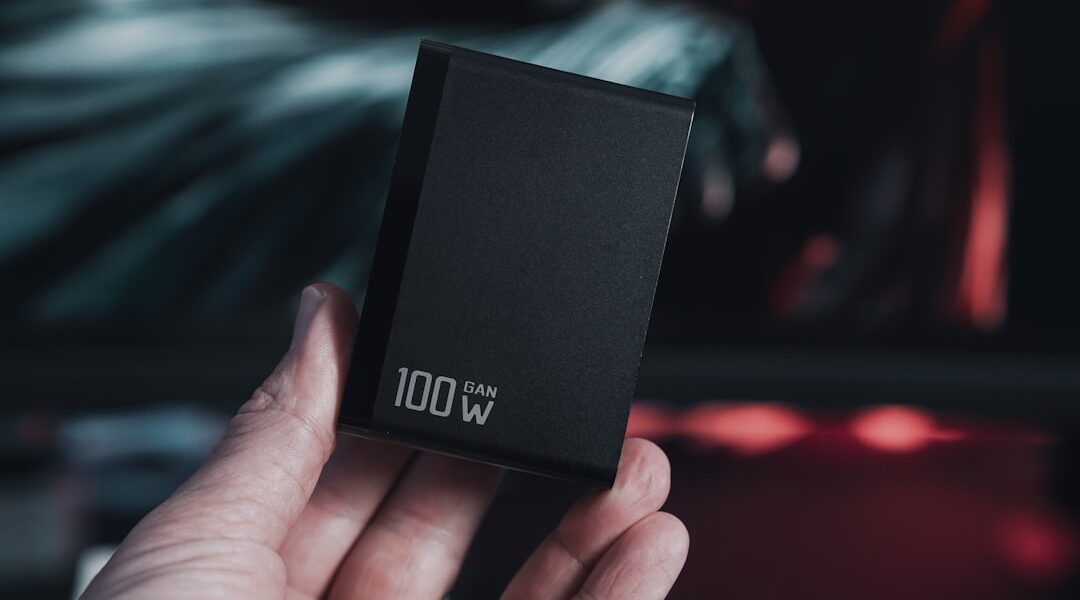Mini DisplayPort is a compact audio and video interface developed by Apple. It is used to connect devices such as monitors, projectors, and TVs to computers, laptops, and other electronic devices. The technology is known for its small size and high performance, supporting high-definition video and audio.
Mini DisplayPort allows for multiple display configurations, enabling users to connect multiple monitors or screens to a single device. The technology offers high data transfer speeds, supporting resolutions up to 4K and high refresh rates. This ensures smooth video and audio streaming with stunning visual clarity and detail, without blurring or distortion in fast-moving images.
Mini DisplayPort can transmit both video and audio signals through a single cable, reducing clutter and simplifying setup. Mini DisplayPort’s versatility and convenience make it popular for both work and entertainment purposes. Its ability to provide high-quality display and sound, combined with its compact size and efficient performance, has made it a widely adopted interface in modern electronic devices.
Key Takeaways
- Mini DisplayPort technology allows for high-definition video and audio output from a compact port
- Devices with Mini DisplayPort can be connected to monitors, projectors, and other displays for seamless video output
- To maximize display quality with Mini DisplayPort, use high-quality cables and ensure compatibility with the display device
- Expanding your display with Mini DisplayPort allows for multi-monitor setups and daisy-chaining displays
- Mini DisplayPort supports high-quality audio output, making it suitable for both video and audio applications
Connecting Devices with Mini DisplayPort
Connecting to External Displays
Connecting devices with Mini DisplayPort technology is a straightforward process that requires the use of a compatible cable or adapter. Many modern computers and laptops come equipped with Mini DisplayPort outputs, allowing users to easily connect their devices to external displays. To connect a device with a Mini DisplayPort output to a monitor or TV with a Mini DisplayPort input, users simply need to use a Mini DisplayPort cable to establish the connection.
Using Adapters for Compatibility
If the external display does not have a Mini DisplayPort input, users can use a Mini DisplayPort to HDMI or Mini DisplayPort to VGA adapter to connect their devices. These adapters allow users to connect their Mini DisplayPort-enabled devices to displays with HDMI or VGA inputs, providing flexibility and compatibility.
Connecting Other Devices
In addition to connecting computers and laptops to external displays, Mini DisplayPort technology can also be used to connect other devices such as tablets and smartphones to monitors or TVs. Many modern tablets and smartphones come equipped with Mini DisplayPort outputs, allowing users to easily connect their devices to external displays for presentations, gaming, or multimedia purposes. By using a compatible cable or adapter, users can enjoy high-quality audio and video streaming from their portable devices to larger screens.
Maximizing Display Quality with Mini DisplayPort

Maximizing display quality with Mini DisplayPort technology is essential for those who require high-definition video and audio performance. The technology supports resolutions of up to 4K, providing users with stunning visual clarity and detail. To maximize display quality, users should ensure that they are using high-quality cables and adapters that are capable of supporting the desired resolution and refresh rate.
Using low-quality cables or adapters can result in reduced display quality and performance, so it is important to invest in reliable and well-made accessories. In addition to using high-quality cables and adapters, users can also maximize display quality by adjusting the display settings on their devices. Many computers and laptops allow users to customize the display resolution, refresh rate, and color settings to optimize the visual experience.
By adjusting these settings, users can ensure that they are getting the best possible display quality from their Mini DisplayPort-enabled devices. Furthermore, users can also take advantage of advanced display technologies such as High Dynamic Range (HDR) and Wide Color Gamut (WCG) to enhance the visual experience even further. By maximizing display quality with Mini DisplayPort technology, users can enjoy stunning visuals and immersive audio that elevate their entertainment and productivity experiences.
Expanding Your Display with Mini DisplayPort
| Display Type | Supported Resolutions | Maximum Length |
|---|---|---|
| HDMI | 1920×1200 | 25 feet |
| VGA | 1920×1200 | 50 feet |
| DVI | 1920×1200 | 15 feet |
Expanding your display with Mini DisplayPort technology is a convenient way to increase productivity and multitasking capabilities. The technology supports multiple display configurations, allowing users to connect multiple monitors or screens to a single device. This makes it an ideal choice for those who require a multi-screen setup for work or entertainment purposes.
By connecting additional displays to a computer or laptop using Mini DisplayPort technology, users can create a more immersive and efficient workspace that allows for seamless multitasking and increased productivity. In addition to connecting multiple monitors, users can also take advantage of daisy-chaining capabilities offered by some Mini DisplayPort-enabled devices. Daisy-chaining allows users to connect multiple monitors in a series using a single cable, simplifying the setup process and reducing cable clutter.
This feature is particularly useful for those who require a large number of displays in their workspace or for those who want to create a seamless multi-monitor setup for gaming or entertainment purposes. Overall, expanding your display with Mini DisplayPort technology provides users with the flexibility to create customized display configurations that suit their specific needs and preferences.
Audio Capabilities of Mini DisplayPort
The audio capabilities of Mini DisplayPort technology make it an ideal choice for those who require high-quality audio performance in addition to video. The technology is capable of transmitting both video and audio signals through a single cable, providing users with a convenient and clutter-free setup process. This makes it an ideal choice for those who want to enjoy immersive audio experiences from their external displays without the need for additional cables or connections.
In addition to supporting high-quality audio transmission, Mini DisplayPort technology also supports advanced audio formats such as Dolby TrueHD and DTS-HD Master Audio. These formats provide users with stunning audio clarity and detail, making them an ideal choice for those who want to enjoy cinematic sound experiences from their external displays. Furthermore, the technology also supports multi-channel audio transmission, allowing users to enjoy surround sound experiences from their connected devices.
Overall, the audio capabilities of Mini DisplayPort technology provide users with a high-quality audio experience that complements the stunning visual performance of the technology.
Compatibility and Adaptability of Mini DisplayPort

Seamless Connectivity Across Devices
This broad support ensures that users can easily connect their devices to a wide range of external displays without encountering compatibility issues. Whether you need to connect your laptop to a projector for a presentation or your tablet to a monitor for a more immersive experience, Mini DisplayPort technology makes it possible.
Customizable Display Configurations
The technology is also compatible with various adapters, such as HDMI, VGA, and DVI, allowing users to connect their devices to displays with different input types. This adaptability enables users to create customized display configurations that suit their specific needs and preferences. For example, you can connect multiple monitors for work purposes or create a seamless multi-monitor setup for gaming or entertainment.
Convenient Hot-Swapping Capabilities
Furthermore, Mini DisplayPort technology supports hot-swapping capabilities, allowing users to connect and disconnect devices without having to power off their devices or displays. This convenience makes it easy to switch between different devices or displays without interruption, making it an ideal choice for users who need to work with multiple devices or displays simultaneously.
Tips and Tricks for Using Mini DisplayPort Devices
When using Mini DisplayPort devices, there are several tips and tricks that can help users get the most out of their devices. One important tip is to ensure that all cables and adapters being used are of high quality and capable of supporting the desired resolution and refresh rate. Using low-quality accessories can result in reduced display quality and performance, so it’s important to invest in reliable and well-made accessories.
Another useful tip is to regularly update the firmware and drivers of your devices to ensure compatibility and optimal performance. Manufacturers often release updates that improve compatibility with external displays and enhance overall performance, so it’s important to stay up-to-date with these updates. Additionally, users should take advantage of advanced display settings on their devices such as customizing the display resolution, refresh rate, and color settings to optimize the visual experience.
By adjusting these settings, users can ensure that they are getting the best possible display quality from their Mini DisplayPort-enabled devices. Furthermore, users should also consider using daisy-chaining capabilities offered by some Mini DisplayPort-enabled devices when connecting multiple monitors in a series using a single cable. This feature simplifies the setup process and reduces cable clutter, making it easier to create customized display configurations.
Overall, by following these tips and tricks, users can maximize the performance and versatility of their Mini DisplayPort devices while enjoying stunning visuals and immersive audio experiences from their external displays.
If you’re looking for more information on mini displayport, you should check out this article on Letter Wolves. They have a comprehensive guide on how to use mini displayport and its compatibility with different devices. It’s a great resource for anyone looking to learn more about this technology.
FAQs
What is a mini DisplayPort?
A mini DisplayPort is a smaller version of the DisplayPort connector, which is used to connect a computer to a monitor or other display device. It is commonly found on laptops, tablets, and other portable devices.
What devices use mini DisplayPort?
Mini DisplayPort is commonly used on laptops, tablets, and other portable devices, as well as on some desktop computers and monitors. It is also found on some peripherals such as docking stations and external graphics cards.
What are the advantages of mini DisplayPort?
Mini DisplayPort offers high bandwidth and supports high-resolution displays, making it suitable for connecting to high-definition monitors and other display devices. It also supports audio and video signals, and can be used for daisy-chaining multiple monitors.
Is mini DisplayPort the same as Thunderbolt?
No, mini DisplayPort and Thunderbolt are not the same, but they are compatible with each other. Thunderbolt is a hardware interface that combines DisplayPort and PCI Express into a single connection, allowing for high-speed data transfer and the ability to daisy-chain multiple devices.
Can I connect a mini DisplayPort to HDMI or VGA?
Yes, you can use a mini DisplayPort to HDMI or VGA adapter to connect to a monitor or display device that uses those interfaces. These adapters are widely available and allow for easy connectivity between devices with different ports.




